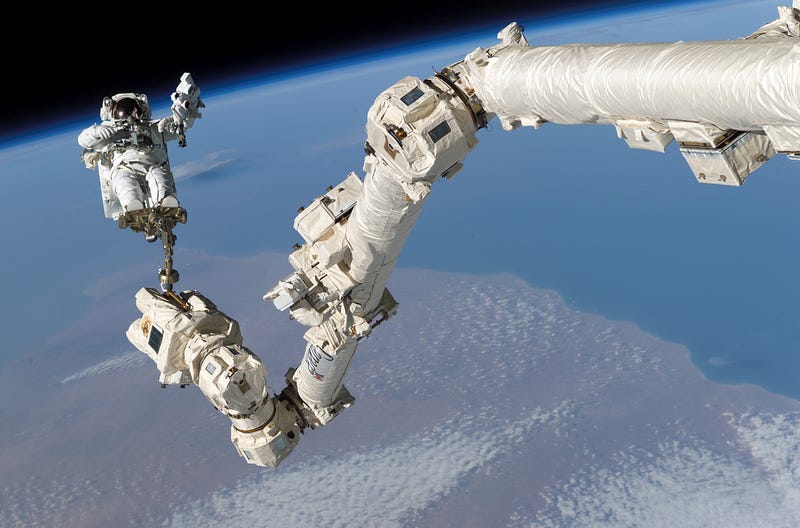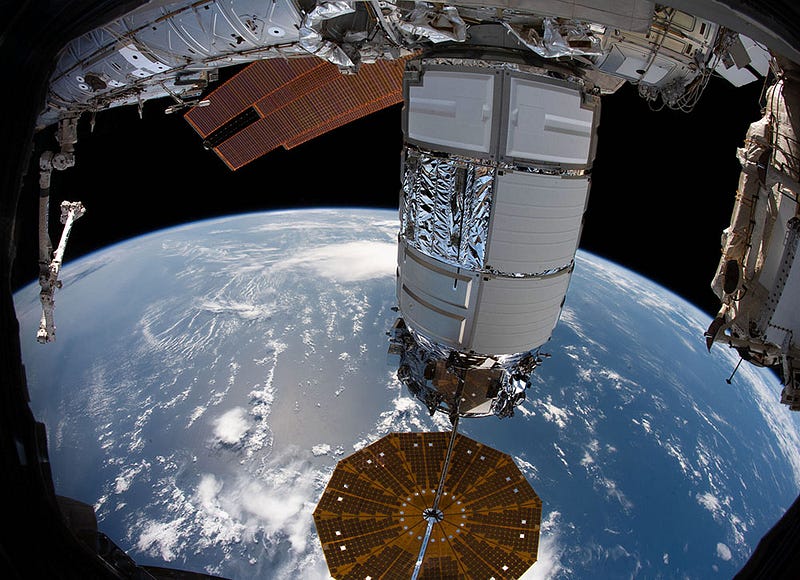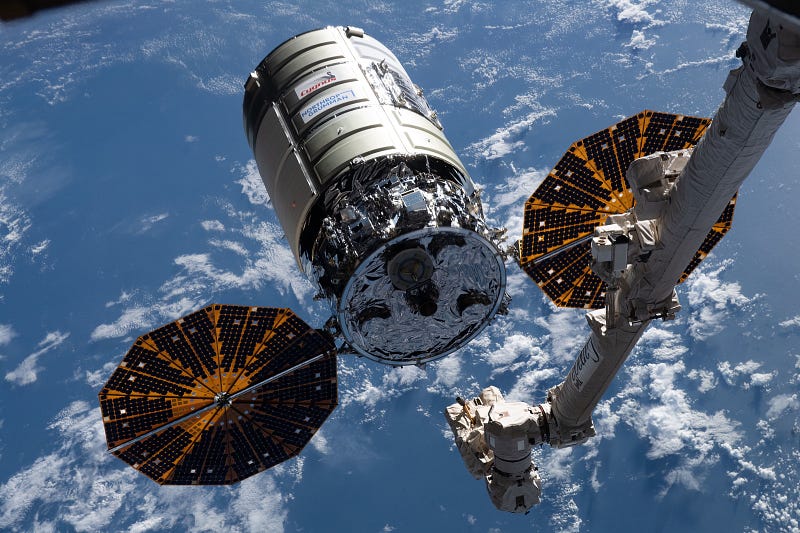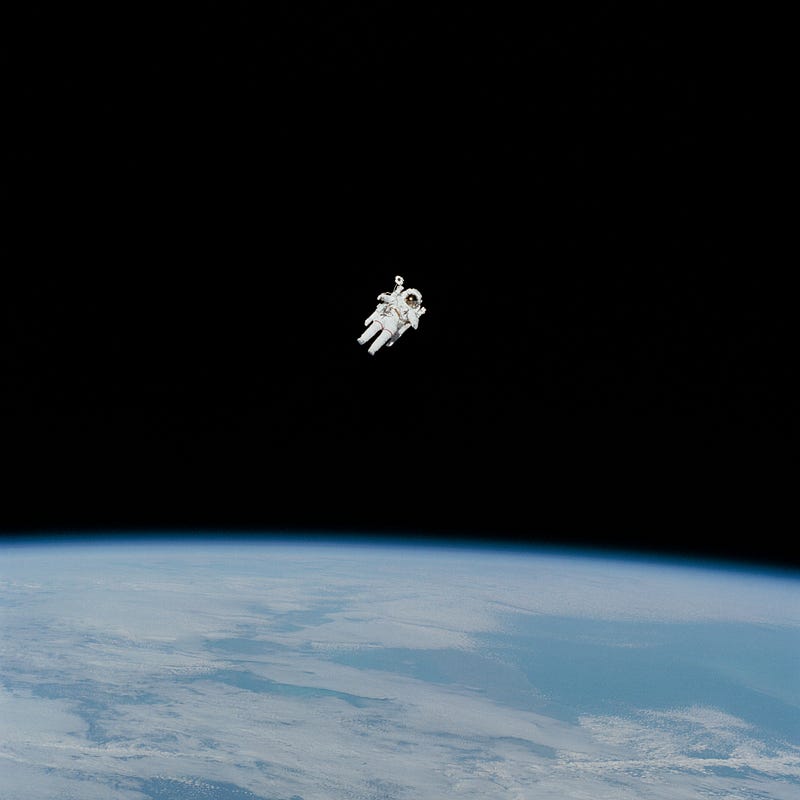NASA's Space Missions: Cygnus Departs, Starliner Delays Continue
Written on
Chapter 1: Overview of Recent Space Activities
NASA’s recent live broadcast showcased the departure of Northrop Grumman’s Cygnus spacecraft from the International Space Station (ISS). Meanwhile, Boeing’s Starliner remains docked due to unanticipated technical difficulties. This situation sheds light on the intricacies and triumphs of space missions, providing essential insights into the challenges of space travel.

On Friday, the station’s Canadarm2 robotic arm skillfully detached the Cygnus spacecraft from the Unity module, gently pushing it away. This marked the conclusion of a five-and-a-half-month mission, during which Cygnus delivered 8,200 pounds of crucial supplies, scientific instruments, commercial products, and hardware to the ISS.
The final task for Cygnus was the Kentucky Re-entry Probe Experiment-2 (KREPE-2), which aimed to collect vital data on a thermal protection system crucial for safeguarding spacecraft during reentry into Earth’s atmosphere. After successfully completing its mission, Cygnus performed a deorbit engine firing to ensure both it and the associated ISS waste would safely incinerate upon reentry.

While Cygnus successfully completed its mission, Boeing’s Starliner has faced unexpected challenges. The spacecraft, on its inaugural crewed flight, docked with the ISS on June 6 but encountered issues with five of its thrusters and helium leaks, leading to an extension of its mission timeline as engineers work to resolve these problems.
During a live-streamed media briefing, NASA astronaut Suni Williams, part of the Starliner crew, stated, “This is a test flight, so we anticipated some challenges, and we are addressing them.” This acknowledgment highlights the inherent risks and learning opportunities associated with test flights. NASA’s Commercial Crew Program manager, Steve Stich, emphasized the importance of thorough data analysis before making decisions about the return of Starliner.

The contrasting experiences of Cygnus and Starliner illustrate the dual nature of space exploration, characterized by significant successes and unexpected challenges. The successful departure of Cygnus reflects Northrop Grumman’s reliable resupply missions, while Starliner’s prolonged stay serves as a reminder of the complexities of space travel.
What If Scenarios
- What if Starliner's thruster issue had arisen during a critical maneuver? Such a situation could have posed serious risks to crew safety and mission integrity, underscoring the necessity for rigorous testing and well-defined contingency protocols.
- What if the KREPE-2 experiment fails? Failing to obtain accurate data on thermal protection systems could hinder the development of future spacecraft designed for safe reentry, affecting long-term space exploration objectives.

NASA’s collaborations with private companies like Northrop Grumman and Boeing reflect the changing landscape of space exploration. These partnerships leverage the innovative capabilities of the private sector while drawing on NASA’s extensive experience. Nevertheless, the varying challenges these companies encounter are evident.
Northrop Grumman’s reliable track record with the Cygnus spacecraft showcases the effectiveness of its commercial resupply services. In contrast, Boeing’s Starliner program, despite its setbacks, represents a pivotal step toward diversifying crewed spaceflight capabilities.
As NASA and its commercial partners navigate these challenges, the implications for future space exploration are significant. The lessons learned from Starliner’s technical difficulties will likely enhance safety protocols and engineering designs for upcoming missions. Likewise, the successful execution of Cygnus’s mission will provide valuable data and experience to support future resupply efforts.

Practical Insights for the Space Industry
- Rigorous Testing and Validation: The challenges faced by Starliner highlight the critical need for thorough testing and validation processes to ensure the reliability of spacecraft systems for astronaut safety.
- Flexibility and Adaptability: The capacity to respond to unforeseen challenges is vital. Whether extending missions or developing immediate solutions to technical issues, flexibility is essential for successful space operations.
- Collaboration and Communication: Strong collaboration between NASA and its commercial partners, as well as transparent communication with the public, are crucial. Clear updates and transparency foster trust in space exploration initiatives.
- Investment in Technology: Ongoing investment in new technologies and innovations is essential to tackle the complex challenges of space travel, including advancements in propulsion systems and thermal protection technologies.

GAME CHANGER MOMENT
The departure of Cygnus and the extended stay of Starliner encapsulate the dynamic and unpredictable nature of space exploration. As NASA and its partners work through these challenges, they prepare for future missions that will push the boundaries of human understanding and capability.
The quest to explore the stars is fraught with challenges, but each mission — whether successful or not — brings humanity closer to mastering the final frontier. For now, the focus remains on ensuring the safe return of Starliner and learning from both spacecraft's experiences to enhance future space exploration.
As we observe these developments, we are reminded of the resilience, creativity, and determination that fuel humanity’s pursuit of the cosmos. Whether through Cygnus’s successful departure or Starliner’s troubleshooting, each advancement is a testament to the enduring spirit of exploration and discovery. Stay tuned for more updates and insights into the ever-evolving realm of space travel.
Chapter 2: Upcoming Challenges in Space Traffic
The upcoming video discusses the anticipated heavy traffic at the ISS due to various missions, highlighting the complexities involved.
This video explores the issue of space debris and the potential crisis it poses for future space operations.